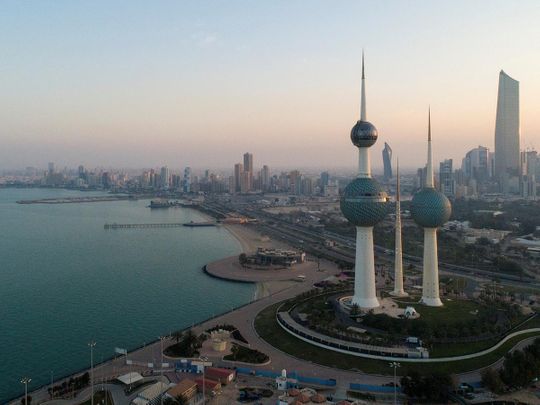
Dubai: GCC economies are expected to make modest economic recovery over 2021-2023, according to credit rating agency Standard & Poor’s.
S&P forecasts a real GDP growth of 2.5 per cent for the GCC over 2021-23 after a contraction of about 6 per cent in 2020.
“This year’s contraction is split relatively evenly between the hydrocarbon (oil and gas production) and nonhydrocarbon sectors and stems from OPEC production cuts, alongside weaker regional demand due to low oil prices, and restricted economic activity due to the COVID-19 pandemic,” said Trevor Cullinan Director - Sovereign Ratings at S&P.
Oil dominance
The hydrocarbon sector accounts for close to 40 per cent of the GCC’s real GDP. Saudi Arabia’s economy is almost twice the size of the next largest GCC sovereign, the UAE, and so has an overweight bearing on the aggregate data.
“We expect a broad recovery across hydrocarbon and nonhydrocarbon sectors, over the period to 2023. Our base case assumption is that OPEC+ production cuts, amounting to about 17 per cent of October 2018 production, end in April 2022. Our current assumptions see Brent oil prices averaging $50 in 2021-2022 and then $55 in 2023 and beyond,” said Cullinan.
These assumptions are based on S&P’s view that widespread availability of effective immunization against the coronavirus could come by the middle of next year.
Saudi Arabia
The sharp decline in Saudi Arabia’s net exports, due to OPEC+ related oil production cuts, brought down real GDP in 2020. S&P sees broad declines across non-oil sectors, and steep drops in wholesale and retail trade and restaurants and hotels. The government’s fiscal consolidation measures included a July increase in VAT to 15 per cent from 5 per cent is expected to reduce domestic consumption in the second half of the year.
In 2022, economic activity is expected to accelerate to close to 3 per cent due to the end of OPEC+ quotas and the real GDP to recover to 2019 levels in 2022.
Rest of GCC
Bahrain’s economy is less directly dependent on the hydrocarbon sector than the rest of the Gulf. Although the economy is projected to contract 5 per cent this year, the government’s plans to promote infrastructure development, including several large projects like the refinery modernization program, to support growth and GDP is likely to recover to 2019 levels midway through 2022.
Kuwait’s economy is the most directly dependent on hydrocarbons of all GCC sovereigns. With its firm commitment to implement oil production cuts until April 2022, economic growth is expected to remain sluggish From mid-2022, as additional oil production capacity comes online, including from the restart of production in the Joint Neutral Zone with Saudi Arabia, Kuwait’s economic growth is expected to gain momentum.
The OPEC+ agreement to limit oil production, which Oman voluntarily signed, will reduce the country’s volumes at least 6 per cent in 2020. Lower economic activity due to pandemic-driven lockdowns and curfews, the slowdown in global tourism, and planned delays in public-sector capital spending will weigh on the non-oil sector in 2020. GDP growth is expected to return to 2019 level in 2022.
Qatar left OPEC in January 2019 and is not subject to its production cuts. Qatar’s hydrocarbon sector is about 80 per cent gas and 20 per cent oil, while most other GCC economies are concentrated in the oil sector. However, according to S&P it is the non-hydrocarbon sector that is dragging down economic activity in 2020 and it is expected to recover in 2021. Headline real GDP growth through 2023 will remain below the historical average due to a slowdown in construction and associated sectors.
Because of OPEC+ cuts, S&P expects Abu Dhabi’s oil production will decline to an average 2.8 million barrels a day in 2020, from 3.1 million in 2019. Non-oil sectors such as real estate, trade, retail, and hospitality will contract sharply this year.
Even before the pandemic began, economic growth had been subdued, averaging 1.3 per cent over 2018-2019, largely because of oil production cuts under the previous OPEC agreement. At the same time, non-oil sector activity stalled because of weak regional demand, tight fiscal and monetary policy, and rising geopolitical tensions.
“We expect a gradual economic recovery from 2021, but with real GDP only to recover to close to 2019 levels by 2023,” said Cullinan.Hydrocarbon sector production will be boosted from 2022 as OPEC+ oil production limits are lifted and new gas production comes on stream. Non-oil sector recovery will be driven by public investment in manufacturing particularly petrochemicals, logistics, and construction.
Dubai’s economy faced contraction 2020, owing partly to the importance of travel and tourism, two of the industries most affected by COVID-19.
The delayed Expo 2020, which will now take place October 1, 2021-March 31, 2022, should provide a platform for a recovery in activity. We project real GDP to recover to 2019 levels by 2023.








